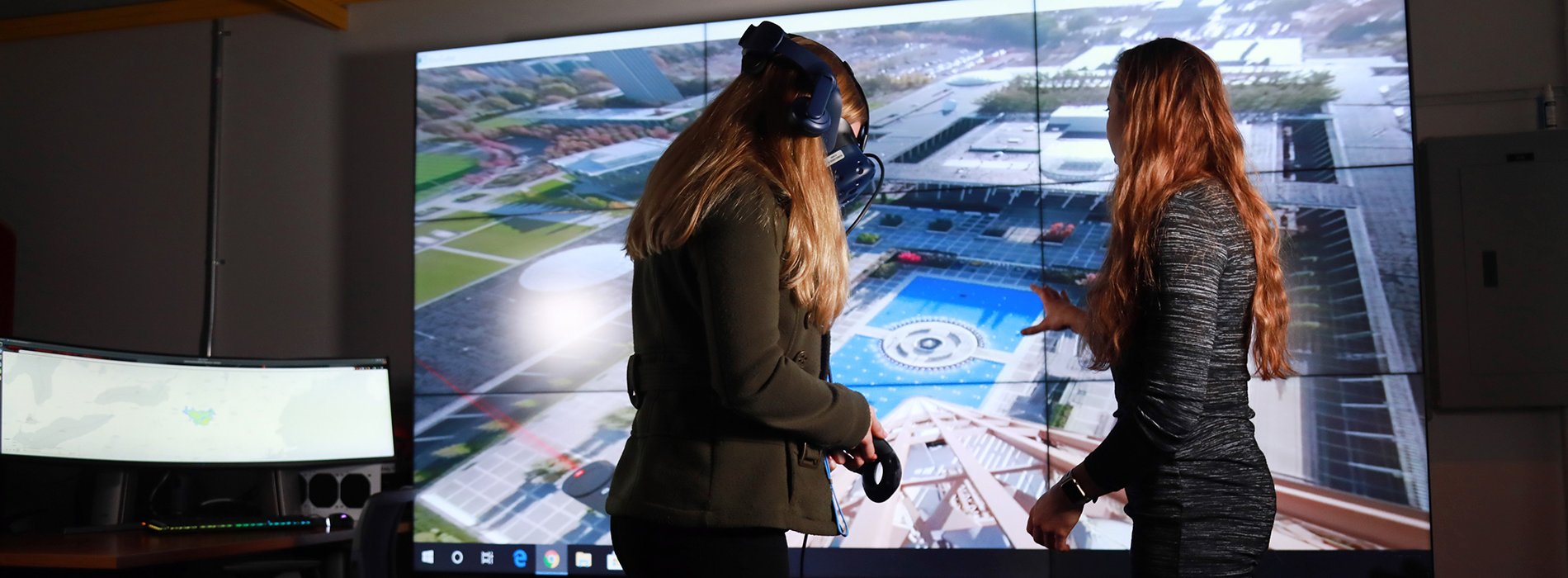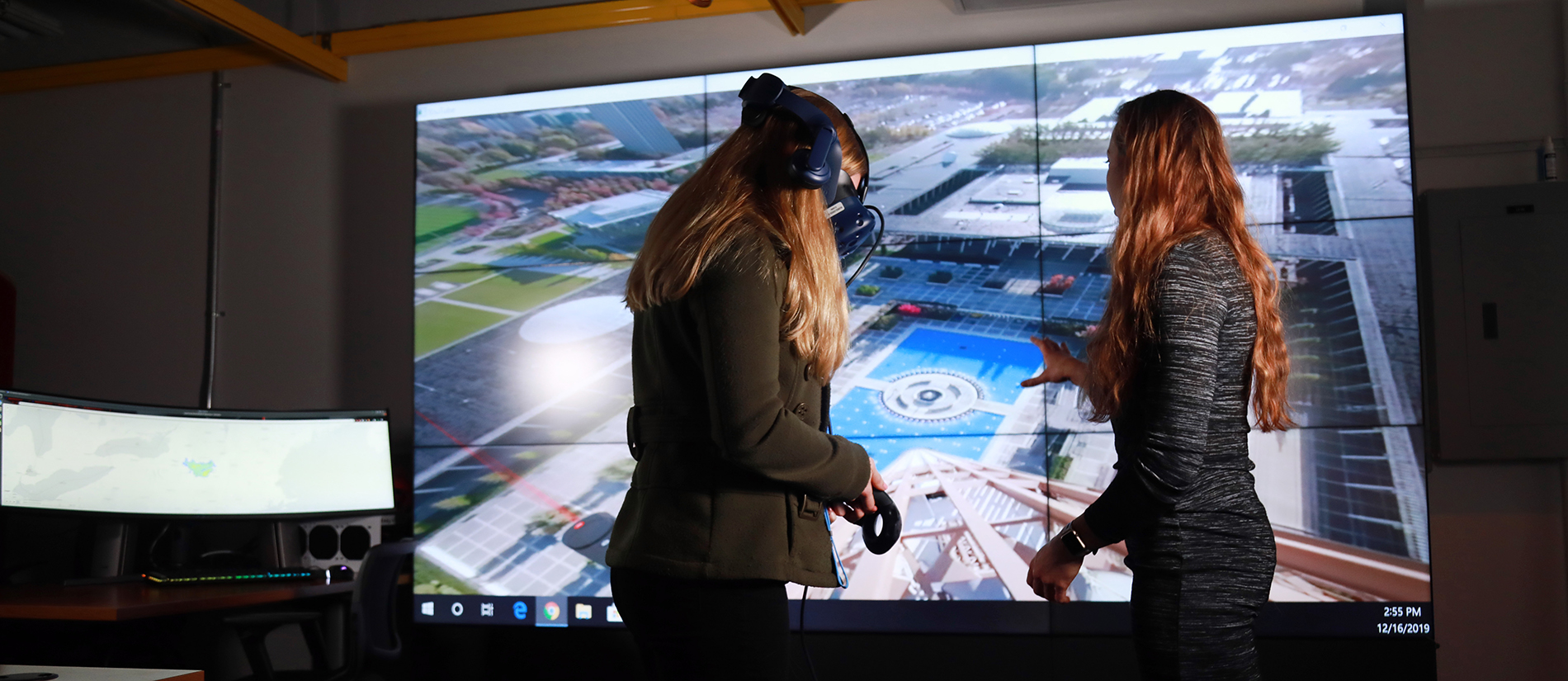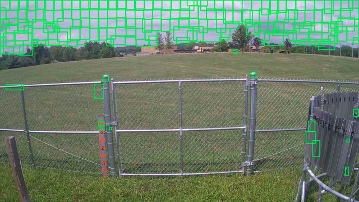

xCITE Laboratory
Bridging the gap between collecting research data and visualizing and communicating the data to a broad audience.
The ExTreme Collaboration, Innovation, and Technology, or xCITE, laboratory is a state-of-the-art software development and data/visual analytics innovation facility within the Atmospheric Sciences Research Center (ASRC). xCITE is a multi-disciplinary collaboration space open to the UAlbany public as well as public and private partners. With a unique combination of atmospheric scientists and computer engineers, the lab equips the scientific community with the tools and resources they need to take their research to the next level.
As a component of the University at Albany weather enterprise, the xCITE Lab works closely with other enterprise participants, including the Department of Atmospheric and Environmental Sciences, ASRC, the New York State Mesonet, and the Center of Excellence in Weather & Climate Analytics (COE).

Understanding and quantifying forecast uncertainty associated with winter weather across New York State has presented a great challenge within the Atmospheric Science modeling and forecasting community. Detection of precipitation and especially precipitation type is particularly valuable for those in the transportation sector.
We use surface meteorological data and images from the New York State Mesonet to label and train a machine learning model to detect ongoing precipitation within an image. Continued development will further resolve precipitation to the detection of snow and rain, which both have varied impacts on transportation.

The NYS Mesonet cross platform mobile application offers real-time access to NYS Mesonet data from the nation’s most advanced and largest early warning weather detection network. The app offers weather variables such as current temperature, wind speed, temperature, humidity, snow depth and soil moisture, updated every five minutes. It is displayed in map-form, with real-time camera images available at each location.
The xCITE lab is responsible for the design, integration and development of the app. This allows us to add new features, such as the ability for custom variable alerts for a set threshold to be sent directly to your phone for any of the 126 stations located across the state.

This weather forecasting tool will offer real-time predictions on storm outages, electrical load and renewable energy generation, which will better equip utility companies to make important decisions on how to prepare for weather-induced power outages and variations in renewable energy production.
The xCITE Lab is partnering on the dashboard with UAlbany’s Center of Excellence in Weather & Climate Analytics, Electrical Distribution Design, Orange and Rockland Utilities, and Central Hudson Gas & Electric. The tool will produce a customizable dashboard using a combination of New York State Mesonet data, Integrated System Models, and other publicly-available weather data sources, including sensors that are being installed now through the project at large New York solar farms.
The xCITE laboratory contains three high-end CPU/GPU-based desktop scientific visualization and Machine Learning (ML) platforms. These three work systems are ideal for model development, testing, hyperoptimization, postprocessing, and visualization.
High-end water-cooled Linux servers
32 CPU cores
128GB of system memory
1-3 NVidia Titan RTX GPUs
NVMe Flash storage
Containers to meet specialized needs
Easy and secure access
Web graphical user interface
For final machine learning operations (training on bulk images) the xCITE Lab has a fourth, much more powerful “big iron” system in the ultra-high-end AI Deep Learning server (DGX-1). The server is housed in the University at Albany’s Tier-3 Data Center, and managed/maintained by the xCITE laboratory.
The DGX-1 V100 system contains 8 Tesla V100 GPUs with a combined total of 40,960 CUDA (graphics) cores, 5120 Tensor cores, 256GB of GPU memory, and 1TB of RAM/system memory all linked by NVIDIAs 300GB/s NVLINK interconnect. The system employs dual 20-core Intel Xeon E5-2698 v4 CPUs running at 2.2GHz, and has 68TB of SSD storage configured in RAID 6 for redundancy and speed.
Kara Sulia, Director: 518-437-8755, [email protected]
Arnoldas Kurbanovas, Lead Software Engineer: 518-437-8748, [email protected]

ETEC Building, 1220 Washington Ave.
Albany, NY 12226
United States